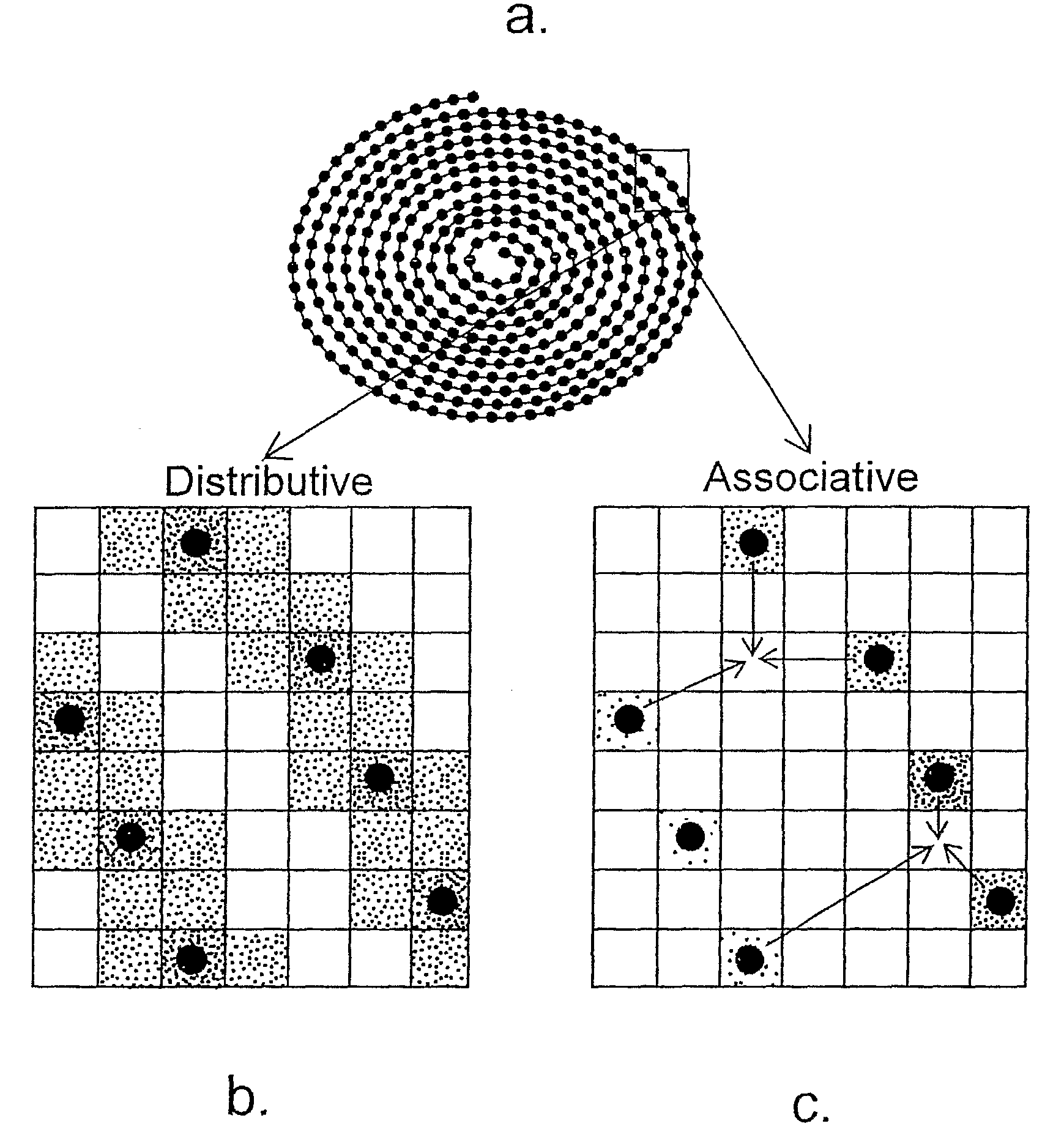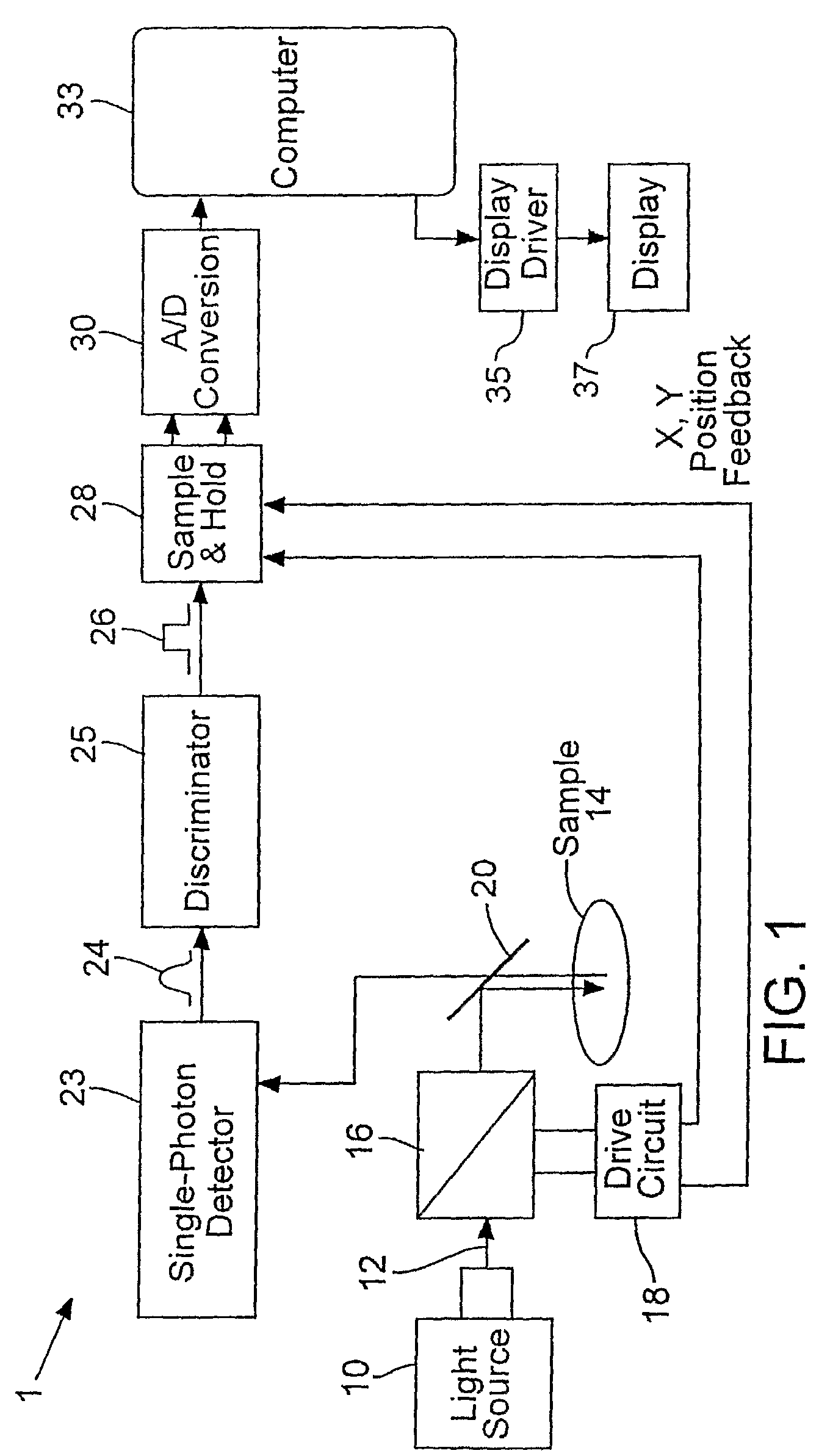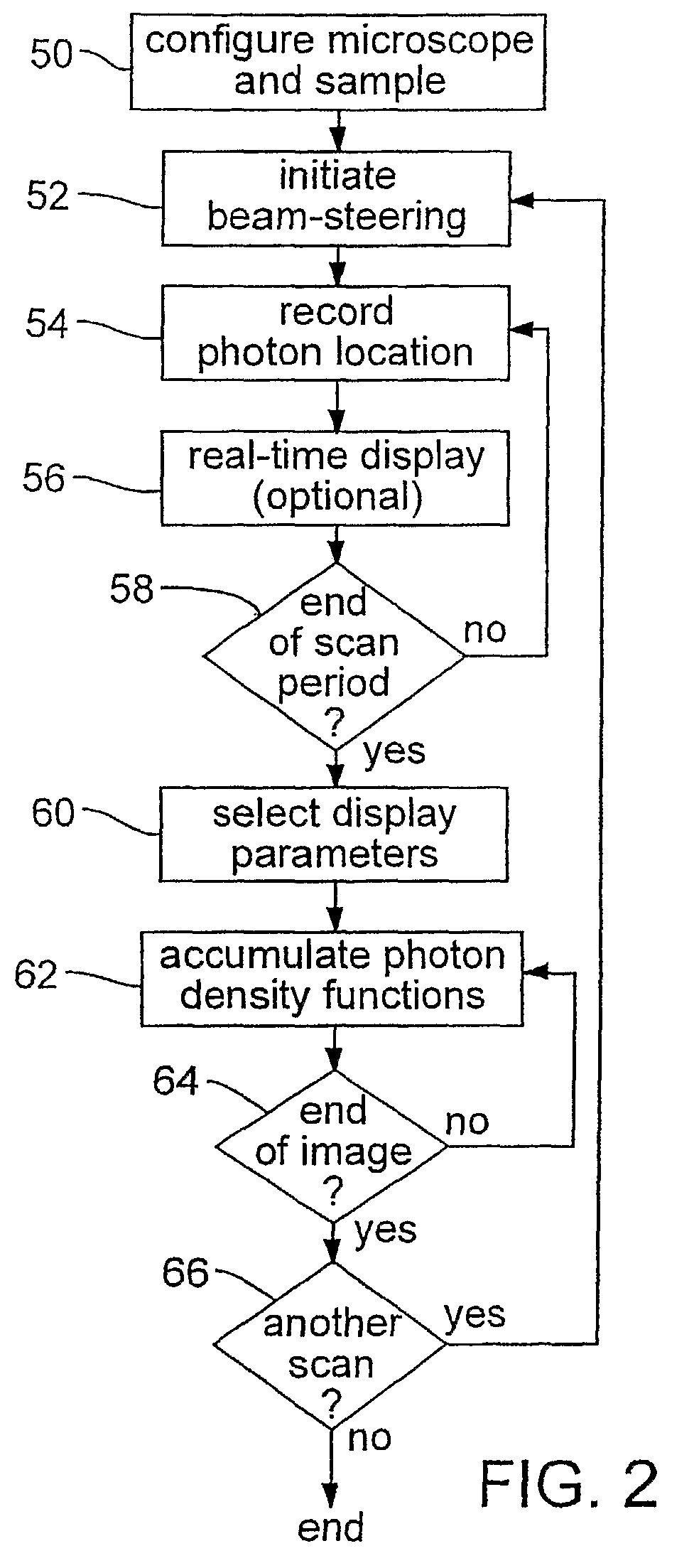Photon event distribution sampling apparatus and method
a distribution sampling and photon event technology, applied can solve the problems of pixel-based scanning typically allowing for reduced flexibility in experiment design, physical and mechanical constraints, and the quality of output signal to be produced in the field of high sensitivity imaging apparatus
- Summary
- Abstract
- Description
- Claims
- Application Information
AI Technical Summary
Benefits of technology
Problems solved by technology
Method used
Image
Examples
example
Application
[0062]One application of an embodiment of the present invention is measurement of release of calcium ion, Ca2+, from intracellular sarcoplasmic reticulum (SR) stores in cardiac cells. Ca2+ release activates the contractions of the heart in order to pump blood throughout the body. Ca2+ is released through ryanodine receptor (RyR) Ca2+ channels present in SR membranes and information concerning the functional properties of these channels, as they exist inside of heart cells, can help in understanding how contraction of the heart is activated and regulated. Since RyR channels are present in intracellular membranes, they cannot be studied using conventional microelectrode-based electrophysiological techniques. However, changes in intracellular Ca2+ can be measured non-invasively by monitoring fluorescence from dyes, such as fluo-3 introduced into the cytoplasm of the cell, which increases when Ca2+ binds to the dye.
[0063]Small increases in fluo-3 fluorescence observed in card...
PUM
| Property | Measurement | Unit |
|---|---|---|
| mean diameter | aaaaa | aaaaa |
| diameter | aaaaa | aaaaa |
| diameter | aaaaa | aaaaa |
Abstract
Description
Claims
Application Information
 Login to View More
Login to View More - R&D
- Intellectual Property
- Life Sciences
- Materials
- Tech Scout
- Unparalleled Data Quality
- Higher Quality Content
- 60% Fewer Hallucinations
Browse by: Latest US Patents, China's latest patents, Technical Efficacy Thesaurus, Application Domain, Technology Topic, Popular Technical Reports.
© 2025 PatSnap. All rights reserved.Legal|Privacy policy|Modern Slavery Act Transparency Statement|Sitemap|About US| Contact US: help@patsnap.com



